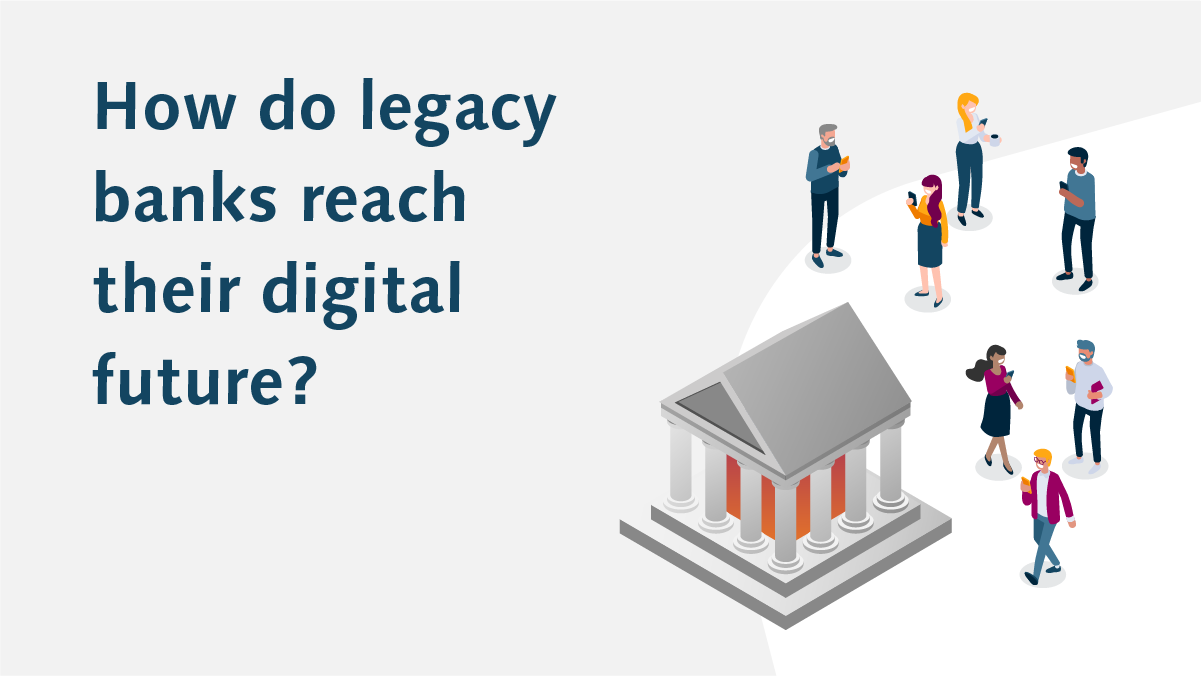
Legacy banks are facing an uncertain future as digital challengers speed up their innovation cycle and raise customer expectations. The rise of Banking as a Service (BaaS) means that there is more competition than ever as big tech companies move into financial services. The threat is coming from non-traditional – and often unpredictable – sources. What can be predicted is that customers want more digital access to their banking services; this means that banks need to change right now because transformation can take a couple of years. As well as progressing to catch up with the current state of digitalisation, banks also need to have systems in place to ensure continual evolution to keep pace with their competition.
Why are legacy banks facing this challenge?
A legacy bank has grown over time and has therefore accumulated a lot of complex infrastructure that has been at least 10 or 20 years in the making. The growth has come from market demand over time and therefore there is a high degree of complexity and interdependence between application layers. The challenge is that banking is also complex, and the market is always changing. Banks need to create new products to maintain customer loyalty and attract new business. With a legacy infrastructure, this can be a slow process that is further interrupted by concerns about downtime.
How do competitors address the challenge of rapid innovation?
Neo banks have the advantage in this rapidly evolving market because they are starting from scratch and therefore don’t have the same complexity of legacy systems. This relates not just to the infrastructure but also the newer technology means that there is a greater pool of talent available for development compared with outdated technology. Neo banks also rely on partner solutions which can be integrated into their own offer. Big tech firms also take the partnership approach and have the same advantage of newer technology and greater access to talent. In addition they can cherry-pick the value-generating products and services without having any of the obligations that traditional banks have to also support legacy financial services.
Embracing the future
While this looks like a negative picture, legacy banks have a lot of advantages in terms of both the volume of their customer base and expertise in the market. The focus should now be on bringing new products and services to the market and take the lead with banking innovation. Part of this will be as a smart follower, adopting proven features and services that neo banks already deliver. This helps banks to keep pace with the competition but as a strategy, it does run the risk of the bank being one step behind their competition. This is why it’s important to review the infrastructure to ensure that it can support future requirements – and that in turn is why that long understanding of banking and the customer base is so valuable.
There are many different ways that legacy banks can embrace change. Some organisations launch a “spin-off” brand, balancing legacy expertise with an agile, neo bank approach to development and delivery of new features and services. Others try to overhaul the whole service to leverage the brand value of the trust that has been built up in the customer base. The challenge there is to maintain business as usual whilst also launching new features and services – and the solution is partnership. The approach of neo banks and big tech have shown that banks don’t have to go it alone to make a success of digital banking. An end-to-end solution can be delivered by creating a complete ecosystem, making the most of existing technology that can be integrated through secure APIs. The challenge that legacy banks are facing becomes an opportunity when banks embrace technology partners that can help them clear the existing hurdles and create a foundation for future ongoing innovation.




